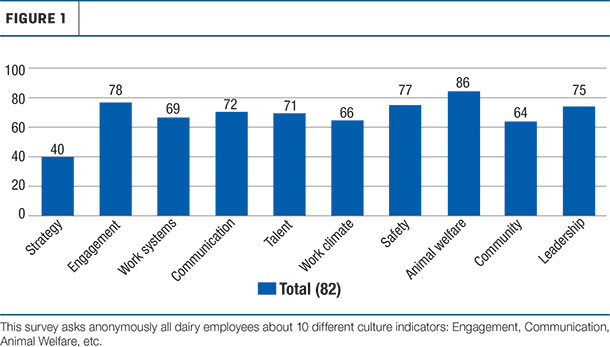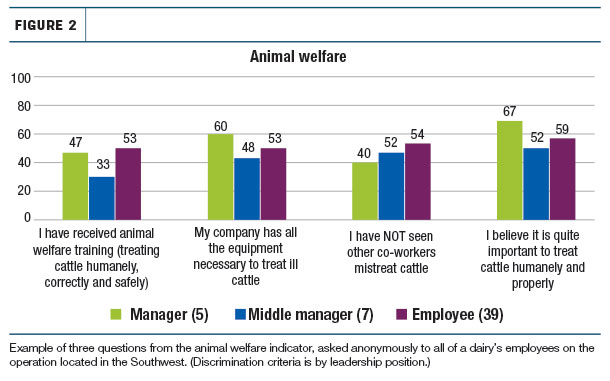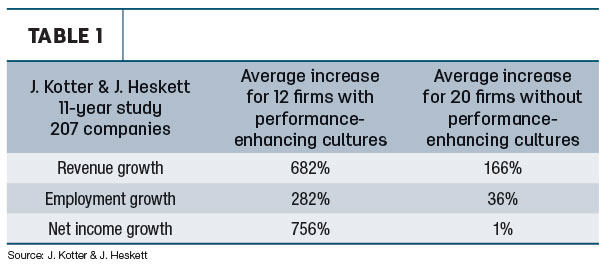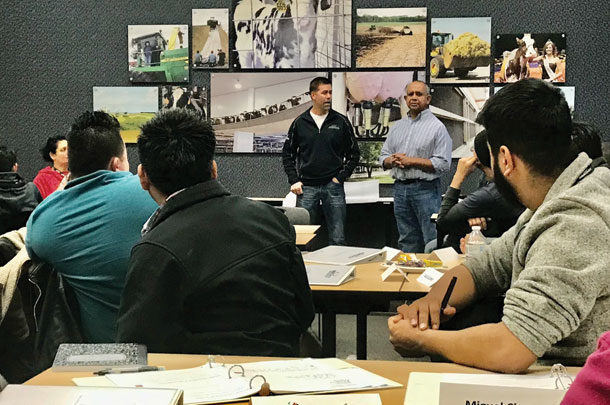As a consultant, when we are called into a dairy, one of the first questions we always ask owners and managers is to describe the culture that exists in their operation.
Most of the time, their descriptions are not at all positive. Even after us asking them to reflect for a moment on the culture they see, many have said to us that there is no culture developed in the dairy, and this is why we would like you to develop our leaders.
It is as though it is implicit that leadership trainings will develop a culture of excellence in their operation, which is partially true. Our leadership trainings and classes help managers to become leaders and provide them with many insights and tools to apply with their teams. However, the senior leadership of the dairy must provide the leaders with the vision, purpose and values of the operation if we want to develop a culture of excellence.
By the way, we always point out that every organization has a culture, whether it has been deliberately designed or left to chance.
There are many studies that have measured how a culture of excellence impacts the performance of an organization. There is no doubt organizations that have developed their cultures deliberately have not just a better performance across the board, but a sustainable one.
For example, Waterstone Human Capital Culture Study interviewed 185 Canadian executives from a variety of industries and found direct correlation between a positive culture and corporate performance. “Eighty-two percent of the surveyed executives either agreed or strongly agreed that culture impacts their ability to acquire top talent, and 87% either agreed or strongly agreed that culture impacts their ability to retain top talent,” according to the study.
Definition of a culture of excellence
Many think that excellent results and achieving goals are the drivers of a culture of excellence. Thus, when the dairy and its departments hit the majority of goals established for the period (quarter, year, etc.) or the key performance indicators are green, they think they have a culture of excellence.
But we should go a little bit further than numbers or goals achieved. We define a culture of excellence as an environment, not a set of rules to be followed. Instead, it is a choice and commitment to go beyond the ordinary. In a culture of excellence, employees are called upon to contribute to and with each other and to the success of the organization. This requires ongoing invention and constant creation.
Characteristics of operations that have a culture of excellence
After more than three decades of visiting dairies of all sizes in South and North America, we have come up with 10 characteristics we have seen in dairies (small, large, etc.) that practice a culture of excellence:
- The vision and purpose of their operations are clearly communicated and articulated.
- Employees understand the company’s impact in their community and society.
- “The troops” understand how their roles contribute to reach a company’s goals.
- Collaborators understand the impact they have within their team and their company.
- Teams are highly collaborative. There is no milking parlor versus herd health, night shift versus day shift, etc.
- The group has a pioneer mentality. They are able to create and manage change.
- Senior leadership is transparent, sets and manages expectations.
- Passion can be seen and felt.
- Teamwork and peer accountability is palpable.
- Clear, consistent and effective communication is in place.
Building a culture of excellence on your dairy
Throughout the years, we have had the opportunity to create a general recipe that has helped our clients and will help you deliberately develop a culture of excellence. In this article, we will describe them briefly:
1. Identify your company’s vision, purpose and values
Ownership and leadership must constantly articulate these three pillars of your dairy if you want to achieve a culture of excellence. All employees need to hear it constantly, especially from the owner or general manager. Should any middle manager or employee not share or agree with the vision, purpose or values, they should not be working with the operation, no matter if they are the top performers or the lowest performers.
2. Identify and assess your existing culture
We always try to identify where the culture is before we start with interventions and discussing/designing a plan of action, so we measure different indicators with surveys (see Figures 1 and 2).


It is important to emphasize that when you survey your teams, you must allow them to answer anonymously. Otherwise, you might not get their real input, and the data collected will not be very useful for designing the plan of action and interventions. Also, we would like to advise to survey the teams periodically to evaluate if there are any changes in the “new” culture. Lastly, surveys will also help you collect data for the alignment process.
One of the most common questions we get from assessing culture is: “How often should we assess our culture?” Our answer might vary due to the size of the operation – the bigger the organization, the longer the implementation of the plans of action and interventions take, therefore re-assessment.
3. Alignment of the vision, purpose and values
This is the most complex step, and we define it as the act of gaining buy-in for the operation’s vision. This step is very dynamic and focuses on people who are complex and unpredictable. Alignment moves us from theory into reality.
In an aligned organization, every employee, from senior management to the night cow mover/milker, not just understands the goals and the vision of the dairy but understands how his or her work contributes to reach and fulfill them. During this step, there are lots of interactions and dialogue back and forth in both formal and informal settings.
4. Execution of the plan
“Vision without execution is hallucination.” –Thomas Edison
We define execution as making the vision a reality. This step is how organizations and their teams take the vision, the purpose and the values of the operation and turn them into results.
For execution to happen, we like to concentrate and work in three key factors: structure (involves planning, organizing, directing as needed), creating momentum (involves initiating actions, being driven, etc.) and effective communication (involves giving feedback and asking for feedback in a formal setting).
Short-term solutions
Most of your organizational problems are caused by an underdeveloped or poor default culture that is out of alignment with your vision and purpose.

Take, for example, solutions like skill development trainings, team-building sessions, leadership and coaching programs. Although they are quite important and have an impact on a dairy’s leadership team, they are not enough to create sustained change in your organization’s culture.
Summary
Owners and general managers have the biggest impact on an operation. They are the ones who set the agenda, example and expectations. They prioritize work, manage, lead and delegate. In other words, they set the culture of the operation. Senior leadership must provide a consistent and clear vision as well as purpose and values to those they lead. If they fail to do it, then a non-deliberate culture takes over which impacts execution and results, which reduces sustainability throughout time.
Always assess your culture. Keep in mind that whatever leadership does not measure or ask to be measured cannot be improved.







